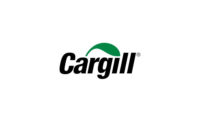
Know Thy Customer, And Other Keys to Business
Growth
A number of years ago, in a conversation with Jim Leprino, chairman and CEO of Leprino Foods, I expressed surprise that he had selected Bob Boynton, then head of the California Dairy Products Institute, to become Leprino’s vice president of sales. I thought Bob, a Ph.D. economist and California dairy lobbyist, was an extremely talented person but lacked sales experience.
In response, Jim asked me, “Tip, what do you
do?” I was a bit taken aback, because Jim knew very well what I did,
but he continued: “Tip, isn’t virtually everything you do
related to selling? Don’t you sell ideas and concepts? Don’t
you develop plans and strategies to help your customers — IDFA
members, members of Congress and government officials — better
achieve their goals? Don’t you present your product — those
ideas and policies — pervasively and passionately? Don’t others
listen to you and seek your advice? Aren’t they often motivated to
positive accomplishments? These are traits of salesmanship,” he said.
“You are a salesman! And a very good one,” he graciously added.
Jim gave me a perspective that I had not considered,
but it has helped me focus my mind and guide my activities for many years.
Thank you, Jim!
Over the years, I have had the opportunity to
introduce and sell many new products: Ice Cream for America; a new trade
show, Worldwide Food Expo; various policies to the legislative and
executive branches of government; syndicated industry-wide marketing
research for the ice cream and cheese industries; MilkPEP’s
advertising and promotion program; and many others. Now I have teamed
up with one of the nation’s top sales management consulting firms,
Prime Consulting Group, to help milk and dairy food companies improve their
sales programs to better compete for limited retail display space.
I sat down recently with Doug Adams, president of
Prime Consulting, to get his take on how dairy food companies’ sales
programs compare to those of other consumer goods companies:
Tip: Doug, you have a long history of marketing
and selling consumer foods. How do dairy foods companies compare with other
food companies in developing and executing successful sales programs?
Doug: I would say the
approaches are similar, but that food companies go deeper in three key
areas. First is their unmatched knowledge about the consumer. Through a
commitment to ongoing consumer research, new product innovation and various
forms of product testing, food companies are constantly trying to exceed
consumer expectations. Second is the investment of time in the joint
business-planning process with customers, getting to know their priorities
and challenges. This leads to the third area, solution or benefit selling.
Because of their efforts in the first two areas mentioned, food companies
are very effective in positioning their programs as solutions to both the
customer (retailer) and their customers’ (consumers) needs.
Tip: What is the major difference in how dairy food
companies and non-dairy food companies approach the sales function?
Doug: Since we are talking about one difference,
I would have to say it is in the area of development and training. Leading
non-dairy food companies invest an average of eight to 10 days annually in
improving sales capabilities. This tends to be a combination of
“skill” training, like selling and negotiating for example, and
“knowledge” development, which focuses on current consumer,
retail and product trends. This is how category leaders maintain their
competitive advantage.
If I could add a second, it is the approach to
channel/customer segmentation. This involves everything from how a supplier
views the historical and future performance of channels/customers, to what
type and quantity of resources are dedicated to each of them. In the end,
it ensures that the supplier is maximizing sales and profitability across
the entire spectrum of customers. I should note that the real leaders have
figured out how to do both of these at the same time.
Tip: Most companies spend much time and energy in
finding new customers, but I know you think there are big payoffs for those
who find and act upon opportunities with existing customers. How does one
do this?
Doug: There is no doubt that the time and energy
dedicated to keeping a customer are less costly than regaining one that was
lost. That said, continued development of a customer over time can deliver
big results. To identify the opportunities requires both a commitment to
“know thy customer” and knowing what actions trigger the end
consumer’s purchases. In traditional sales management terms, these
mean, first, vertical and horizontal relationships at key customers, and
second, a deep understanding of category building blocks.
Before you can “act,” you must
“learn.” Maintaining proper contact and communication at
multiple levels and across multiple functions is paramount. So is the
understanding of the cause-effect relationships in all elements of the
marketing mix. When you put these two together, through an organized and
consistent process, you have a powerful combination.
This ties back to the commitment of leading food
companies to world-class skill and knowledge building coupled with lots of
practice and coaching. Showing you can listen effectively and then deliver
a win-win solution is a key to long term sales building with existing
customers.
Let’s recap a few of Doug’s points:
Know the consumers of your products (get
consumer data and feedback on your products — knowledge is all
powerful).
Invest time in a joint business planning
process with your customer (become an indispensable sales partner).
Position your program as solutions to both your
customer (the retailer) and the customer’s customer (consumer) needs.
Improve sales force development and training
both sales skills and knowledge of products, consumers and various channels
of distribution.
Develop existing accounts fully (a customer
ladder development approach — give your sales force a system to
evaluate where customers are on sales development ladder and help them move
up — rung by rung — product by product — “know thy
customer.”
A reminder: Leading food companies have a commitment
to world-class skill and knowledge building, coupled with lots of practice
and coaching. m
Tip Tipton, chairman and chief executive officer of
the Washington, D.C.-based Tipton Group, is the former CEO of the
International Dairy Foods Association.
$OMN_arttitle="Know Thy Customer And Other Keys to Business Growth";?>
